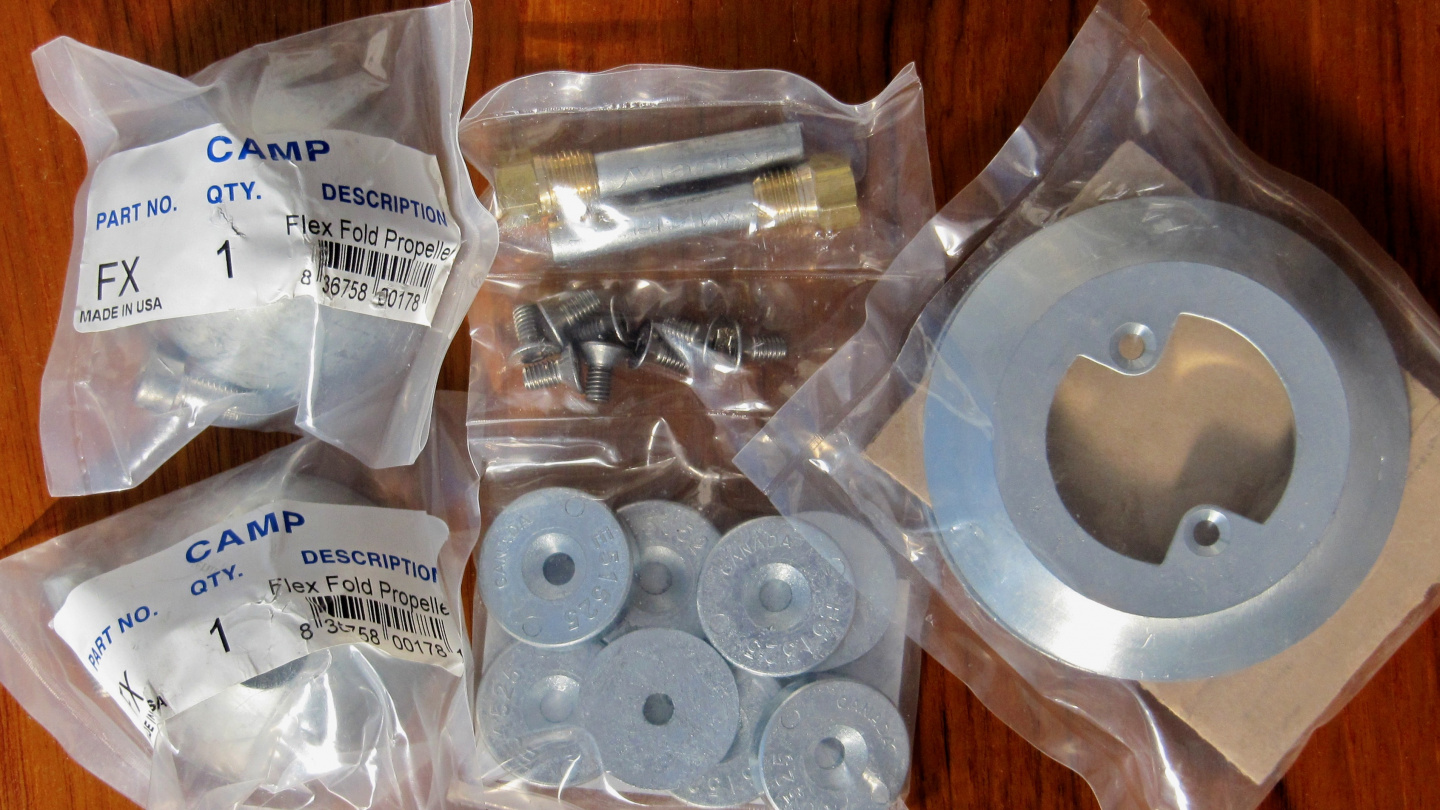For a somebody the word zinc brings up an image of a zinc bucket. For a boater it is however a grey lump of metal bolted to the hull of a boat. The boating season is about to start and it is a time to check the condition of zincs after the last season. The good rule of thumb is to replace the zinc anode when about half of it has disappeared. At the simplest it is just a short trip to a local hardware store or marine chandlery, pick up a new zinc and replace it. For us it was not so simple.
Many equipment manufacturers add zincs to their products for protection against the electrolytic corrosion. There are no standards for the size or shape of the zinc anodes and the common practice is for all manufacturers to design their own. Last autumn when we prepared Suwena for a winter storage we made a list of required zinc anodes. In addition to the basic hull anode we have own zincs for the Westerbeke generator and three onboard water cooled refrigerator compressors from Isotherm and Frigoboat. When we made selection about the fridges for Suwena we did not notice that we had selected a refrigeration units from two different suppliers. Now we need two different type of zincs just for three fridges.
During the winter Suwena has received a new folding propeller from Flex-o-fold and of course it has a special zinc anode as well. Buying zincs is even more difficult because every manufacturer sells only their own types. Also the chandleries do not carry the full variety. Buying one from here and another from there also adds up in cost of freight. Not to mention that the prices are very salty. Of course the zincs are supposed to be in salt water but still for example the Flex-o-fold zinc from the local importer costs 43 € in Finland.
We were starting to be quite stressed. Fortunately Andrus found from Internet an American company Boatzincs.com that is manufacturing zinc anodes. The cost of same Flex-o-fold zinc was only $19.84. In total they have over 1000 different zinc anodes available. We took advantage of their freight package: 48 dollars for 10 kilos anywhere in the world.
We ordered at the same time zincs for two years so the cost of freight per unit remains really low. As we were ordering outside EU we needed to pay the customs fee and VAT as well. Despite of this we got all our zincs for less than half price compared to local sources.

There are also no magic in customs clearance. It was very simple. When the package arrived in Finland we got a notification from post office. We could sign then into the customs web page and make a declaration online. Most of the required fields are found from the order confirmation page from Boatzincs.com. In addition we needed a customs tariff code. Quick call to the customs helpdesk and we got a tariff code 8907900000: boat supplies. The whole experience only took about 10 minutes. The package was delivered to our home already next day.
We got our pile of zincs within two weeks from the order and we can warmly recommend ordering zincs online. Best would be to share the freight between several boats.
Short course on zinc anodes:
Always when two different metals, that are connected electrically together, are immersed into salt water, an electric cell (battery) is created. A small amount of current is constantly circulating between the metals. The least noble metal produces metal ions into the salt water and its mass is therefore reducing.
This phenomenon is generally called galvanic corrosion. If nothing is done about it then underwater metal parts are quickly destroyed.
Typical example about galvanic corrosion is a bronze propeller mounted on a stainless steel shaft. Of course all underwater parts are in danger of “melting” into seawater. The protective measure is to add into the circuit a third metal that is typically made from zinc. Zinc will sacrifice itself because it is less noble metal than other metals used in boat construction. It is very common to Use zinc anodes and most people call zinc anodes just shortly zincs.

